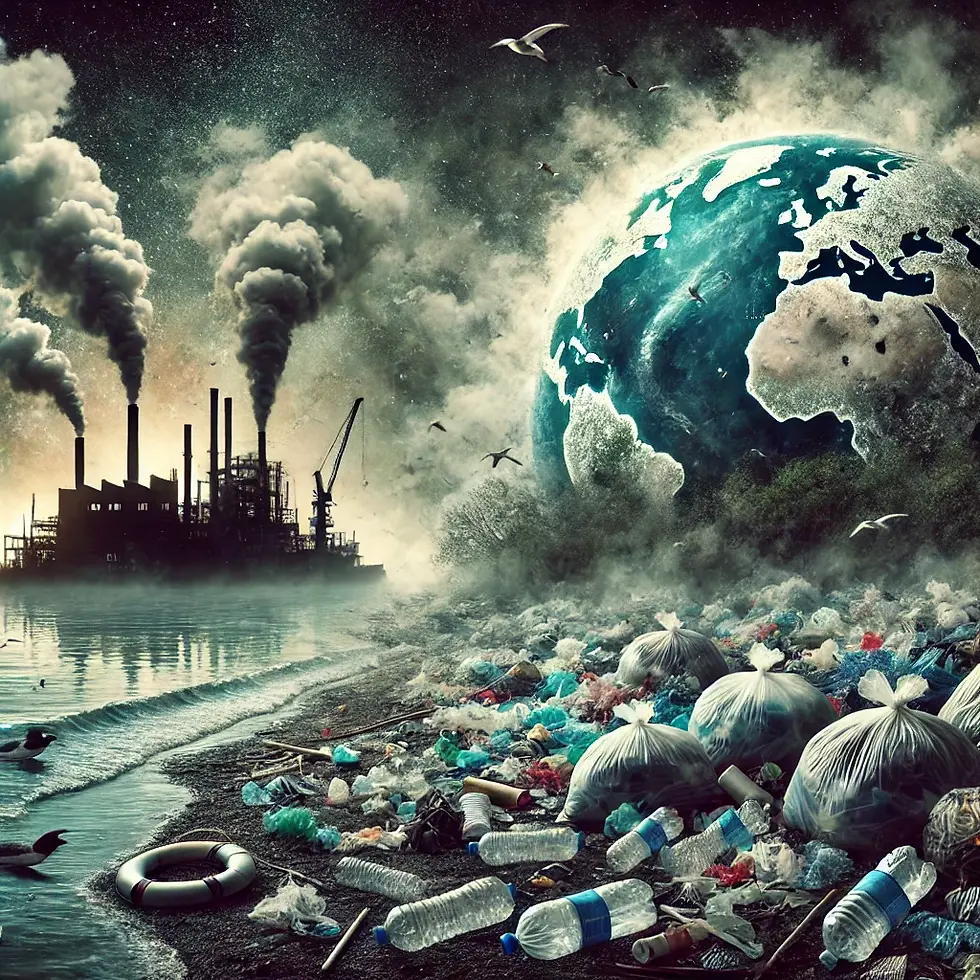The Hidden Cost of Plastic
- eunoia501c3
- Nov 12, 2024
- 3 min read
Plastic is everywhere – from grocery bags and packaging to electronics and even clothing. While it’s convenient, the environmental toll of plastic production is staggering. Here’s a closer look at why plastic production is so damaging and why it’s critical to reduce our reliance on it.
1. The Carbon Footprint of Plastic Production
Plastic is primarily made from fossil fuels like crude oil and natural gas. Extracting and refining these resources releases massive amounts of greenhouse gases into the atmosphere.
According to studies, for every ton of plastic produced, around 2.5 tons of carbon dioxide are emitted. Given that millions of tons of plastic are produced each year, this industry significantly contributes to climate change.
2. Chemical Pollution and Toxic Waste
The production process for plastic involves numerous toxic chemicals, including benzene, vinyl chloride, and other pollutants that can harm human and ecosystem health.
Many of these chemicals end up as waste byproducts, polluting the air, soil, and water around production facilities, particularly in low-income and marginalized communities that are often close to industrial zones.
3. Plastic’s Lifespan and Environmental Persistence
Unlike organic materials, plastic doesn’t decompose quickly. A plastic bottle, for example, can take up to 450 years to break down. This means that almost all plastic ever created still exists in some form, often littering our landscapes and oceans.
As plastic breaks down, it turns into microplastics, which infiltrate every part of the environment, from the soil to the water we drink.
4. Oceanic Pollution and Marine Life Devastation
An estimated 8 million tons of plastic enter the oceans each year. Ocean currents carry this plastic across the globe, creating massive “garbage patches” in the sea.
Marine animals often mistake plastic for food, leading to fatal ingestion. Plastic debris also entangles and injures marine species, causing suffering and a dramatic decline in biodiversity.
5. Human Health Impacts
The chemicals used in plastic production and the microplastics released during breakdown have been found in food, water, and even human blood.
Exposure to these chemicals is linked to various health issues, including hormonal imbalances, reproductive issues, and cancers, making plastic production a human health crisis in addition to an environmental one.
6. Limited Recycling and Waste Mismanagement
Despite advances in recycling, only around 9% of plastic is ever recycled. Much of the plastic we think is recyclable ends up in landfills or incinerated, releasing further pollutants.
The low recycling rate stems from the fact that not all plastics are recyclable, and the recycling process itself is energy-intensive, adding to the overall environmental footprint.
What Can Be Done?
Reducing Single-Use Plastics: Avoiding disposable plastic items like bags, bottles, and cutlery can significantly cut demand.
Investing in Alternatives: Biodegradable, compostable materials, as well as reusable items, are better options that lessen the demand for traditional plastic.
Supporting Legislation and Corporate Responsibility: Governments can implement bans on single-use plastics, incentivize eco-friendly packaging, and hold companies accountable for plastic waste.
Raising Awareness: Educating people on the environmental impact of plastic can encourage more mindful consumption and waste management.
Conclusion
The environmental impact of plastic production is severe, affecting our planet’s climate, ecosystems, and our health. While plastic may be convenient, it comes at a high cost. Reducing plastic production and waste is essential for a healthier, more sustainable future. The choices we make today can create a cleaner, greener planet for generations to come.

Comments